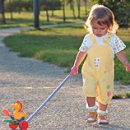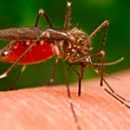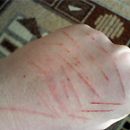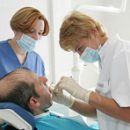What is wound? What are the wounds? How to provide first medical care to the victim? Answers to these questions you will find in the article.
Content
What is wound
Rana is a violation of the integrity of the skin or tissues. Wounds can
be superficial and deep, penetrating and imperriburing. IN
Depending on the nature of the traumatic subject differences wounds,
chopped, cut, bruised, torn, firearms. Every wound
characterized by pain and bleeding. The most strong pain at the moment
Injury. After some time, the pain is usually
decreases. If in one or two days of pain in the wound area intensified,
This indicates a developing infection or any other
Complication.
Any wound can cause such events like fainting,
shock, collapse, bleeding. The main part of complications occurs in
A result of damage to the internal organs and development in them
inflammatory process or violation of their functions.
Later
Complications of the Russian Academy of Sciences usually occur when infectious start. This is
leads to the suppuration of the wound, and in the most severe cases to the development of such
diseases like tetanus, sepsis, gas gangrene, and others. therefore
The fastest hospitalization of victims in a specialized
branch where they will be provided by qualified assistance and introduced
Specific serums (antichangrenous, anti-beaded and other.).
Treatment of Ran
When first aid, it is important when you are injured:
- protect the wound from infection;
- carry out activities aimed at preventing complications;
- deliver a patient to a specialized medical institution.
Temporarily
Stop bleeding can be one of the above methods. This is
The first and main task of assistance, as it is necessary to constantly
remember that in most part cases of death
Coming from blood loss.
Very important task is to protect
wounds from mud hit in it, as an additional infection is always
Causes complications. And although non-infected wounds do not happen, you need
strive to ensure that the number of microbes falling into the body
minimal. For this, the wound is protected by aseptic bandage, but before
This from the surface of the wound and the surrounding skin is removed dirt, scraps
Clothes, Earth, Slices Bands. After that, the skin around the wound
processed by iodine or alcohol. Never try to delete
dirt and foreign bodies from the depths of the wound - it will only lead to excess
troubles (pain shock, bleeding, infection in depth,
Damage to nearby organs).

To impose aseptic
Bandages best use individual dressing package. At
His absence uses bandage, gauze and, as a last resort, resort
to the utility materials (sheet, shirt, brazer and t. D. Close
wound the bandage, do not touch the hands of the part of the bandage, which
will directly lay down to the wound.
With severe injuries and
It is desirable to launch the wounds of the middle severity of the patient
surface. If the patient has fainting, shock or collapse, then
It is necessary to put it so that the head is slightly lower than the body (by this
Provides blood supply to the brain). To further strengthen
Blood supply of the brain, sometimes resort to reception «Self-crying
blood», which lies in the fact that the patient for a few minutes
Raise up upper and lower limbs or tied by harness.
At
head wounds First aid is to stop bleeding that
achieved by pressing (at a distance) of bleeding arteries to the bones
Skull. There are points that are most often used for finger
Arteries pressed (outdoor temporal - ahead of the ear shell and outdoor
Jewish - at the lower edge of the lower jaw 1-2 cm from her angle).
At
Violation of the integrity of the bones of the patient's skulls immediately laid on
Smooth surface. Under the head he is put a rubber circle (or small
Pillow, or Circle of Wat and Marley).
When carrying a patient
should be tied to the carrier. Often the injured patients are
vomit. So that the patient does not choose the pussy masses, his head
Carrying should be tilted into some side and constantly
Watch him.
Advice. With any blood loss in the victim
Thirst arises. If the patient has damage to the abdominal organs
cavities (stomach, intestines, lower abdomen), in no case
It is impossible to give no water, no food, no drugs, as it
aggravate the phenomenon of the starting peritonitis.
Transportation
The victim should always be carried out, taking into account the type of his injury.
Need to strive to ensure that the damaged organ is as stronger as possible
protected from external influences (shaking, jolts, bruises and t. D.).









